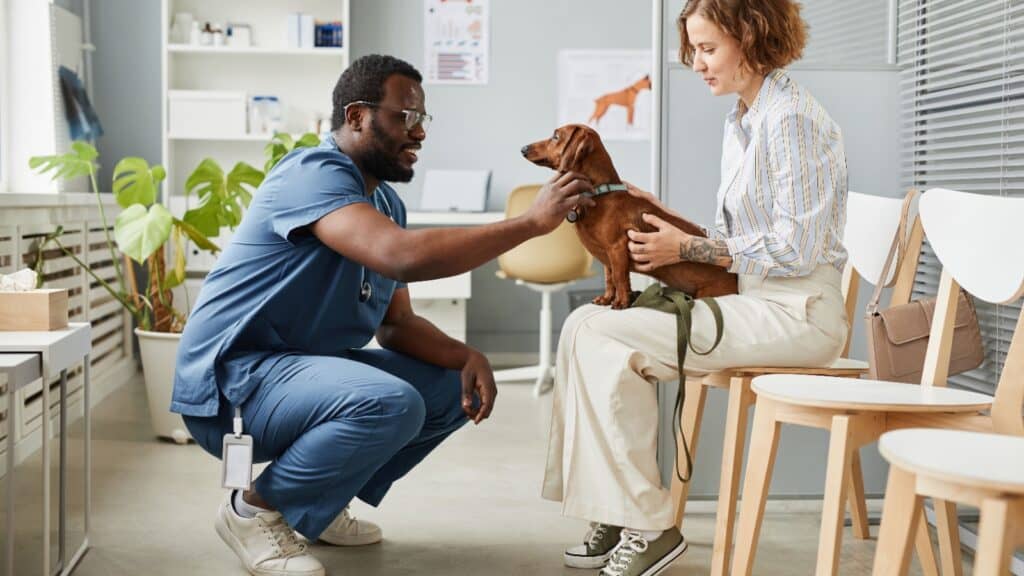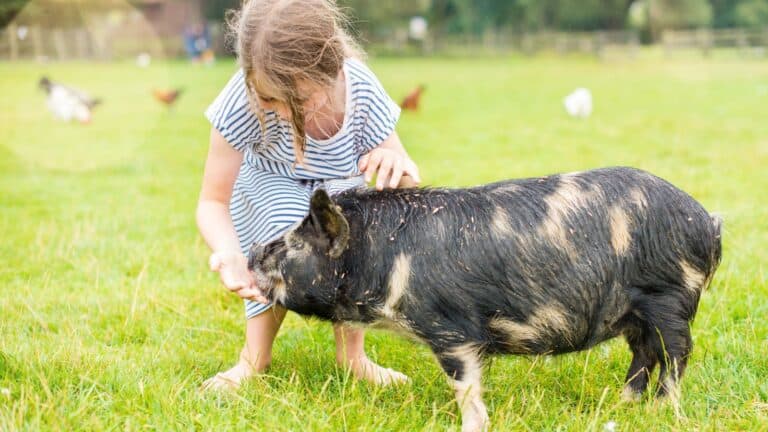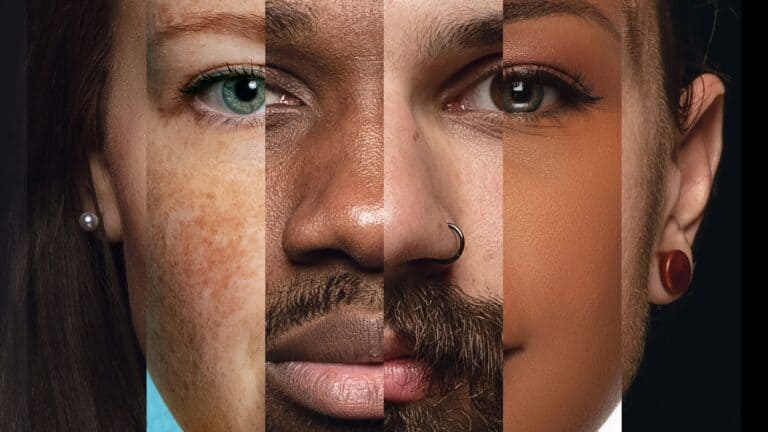The Incredible Journeys of Dogs and Cats: Tales of Long-Distance Homecomings
Did you ever read the book or see the movie, The Incredible Journey? The 1961 novel, by Scottish writer Sheila Burnford, follows the adventure of Luath the Labrador Retriever, Bodger the Bull Terrier, and Tao the Siamese cat as they journey 300 miles through the Canadian wilderness to return to their home. Having grown up with Bull Terriers, I was entranced with the story. Did you know there are real instances of dogs and cats finding their way home across long distances?
Distance Cannot Keep Them Away

Throughout history, tales of pets traveling vast distances to find their way back home have captivated and inspired us. Dogs and cats, despite their relatively limited size and perceived capabilities, have demonstrated remarkable resilience and instinctual prowess in these journeys. Here are some of the most astonishing accounts of such feats, and we examine the science behind their remarkable navigational abilities.
The Story of Bobbie the Wonder Dog

One of the most famous cases is that of Bobbie, a Scotch Collie/English Shepherd mix, who, in 1923, became known as “Bobbie the Wonder Dog.” Bobbie’s owners lost him while on a road trip in Indiana, far from their home in Silverton, Oregon. Six months later, Bobbie miraculously reappeared in Silverton, having traveled approximately 2,800 miles (4,500 kilometers) across harsh terrain in the middle of winter. Bobbie’s journey captured national attention, and he became a symbol of loyalty and determination.
Holly the Cat’s Epic Journey

Holly, a four-year-old tortoiseshell cat, made headlines in 2013 after traveling nearly 200 miles (320 kilometers) to return home. Holly’s owners had taken her on vacation to Daytona Beach, Florida, where she got lost. Over two months later, Holly appeared near her home in West Palm Beach, emaciated and with bleeding paws but unmistakably Holly. Veterinarians confirmed her identity via a microchip, cementing her story as one of the most astonishing examples of feline navigation.
Howie the Persian Cat That Crossed the Australian Outback

The Hicks family took Howie to stay with relatives who lived more than 1,000 miles away while they were on an extended vacation overseas. Months later, when they returned to retrieve Howie, they were told that he had run away. Howie was an indoor cat, and everyone assumed he wouldn’t have the survival skills to make it on his own. A year later, their daughter returned home from school one day and saw a mangy, unkempt, and starving cat. It had taken Howie 12 months to cross 1,000 miles of Australian outback, but he had found his way home.
Bucky’s Incredible Journey

Bucky, a black lab, embarked on an incredible journey, traveling over 500 miles to reunite with his owner after being temporarily relocated from South Carolina to Virginia.
Due to a local ban on dogs in his South Carolina community, Bucky’s owner had placed him with family in Virginia. However, Bucky missed his home too much and decided to make his way back. Within a few weeks, Bucky managed to return to South Carolina.
A good Samaritan found Bucky near his home and took him to a vet, where his microchip was scanned. This led to a quick reunion with his owner, thanks to the vital information on the chip
How Do They Do It? The Science Behind Animal Navigation

The extraordinary stories of pets traveling great distances to return home beg the question: How do they do it? Scientists have studied these phenomena and have proposed several mechanisms that may explain these incredible feats.
Animal Navigation Lab at Lund University

The Animal Navigation Lab at Lund University focuses on how birds and other animals adapt to migrate and navigate long distances. The lab uses a combination of field-based research and laboratory experiments to study physiological and behavioral responses. Their research includes studying compass orientation and navigation strategies in birds, which can provide insights into similar mechanisms in other animals like dogs and cats.
Sensory Cues and Memory

Both dogs and cats possess highly developed senses, which play a crucial role in navigation. Their keen sense of smell allows them to detect familiar scents over long distances. Dogs, in particular, have an olfactory system that is 10,000 to 100,000 times more sensitive than that of humans. This heightened sense of smell enables them to pick up on scent trails that may have long since dissipated for humans.
Additionally, animals have an exceptional spatial memory. Cats, for instance, are known to create mental maps of their surroundings. When lost, they might rely on these mental maps to retrace their steps or find familiar landmarks. This spatial memory, combined with their acute sensory perception, can guide them home.
Magnetic Fields and Navigation

Studies suggest that some animals might have an innate ability to sense the Earth’s magnetic field, a phenomenon known as magnetoreception. This ability has been observed in various species, including birds, sea turtles, and even some mammals. While the exact mechanisms remain a subject of ongoing research, it is believed that magnetoreception helps these animals orient themselves and navigate across long distances.
A study published in the journal “Frontiers in Zoology” found evidence that dogs might align their bodies along the Earth’s magnetic field when relieving themselves. This discovery hints at a possible magnetic sense that could assist them in long-distance navigation.
The Role of Instinct and Survival

Instinct also plays a significant role in these incredible journeys. Dogs and cats have inherited survival instincts from their wild ancestors. When faced with the unknown, these instincts can drive them to search for familiar territory, food sources, and safety. Their ability to adapt and survive in various environments speaks to the evolutionary traits that have been passed down through generations.
Modern Technology and Pet Recovery

While the natural abilities of dogs and cats are awe-inspiring, modern technology has also significantly improved the chances of lost pets being reunited with their owners. Microchipping, for example, has become a standard practice for pet identification. This small, implanted chip carries a unique identification number that can be read by a scanner, providing crucial information to help locate the pet’s owner.
Additionally, social media platforms and online communities have become invaluable tools in spreading the word about lost pets. Stories of remarkable reunions often gain traction online, with communities coming together to assist in the search efforts.
The Takeaway

The stories of dogs and cats traveling great distances to return home are nothing short of miraculous. These journeys showcase the remarkable resilience, loyalty, and navigational abilities of our beloved pets. While the exact mechanisms behind these feats are still being studied, it is clear that a combination of sensory cues, instinct, memory, and possibly even magnetoreception play a role.
As we continue to learn more about the capabilities of animals, these incredible tales serve as a reminder of the deep bond between humans and their pets. Whether through natural instincts or with the aid of modern technology, the determination of these animals to find their way home continues to inspire and amaze us.
How To Protect Your Dog From Heat Stroke This Summer And What NOT To Do!

Summer is here and it’s essential to prioritize your dog’s safety and well-being by taking proactive steps to prevent overheating. Dogs are more susceptible to heat-related illnesses due to their inability to sweat like humans, making it crucial for pet owners to be aware of the signs, prevention methods, and emergency procedures to ensure their dog stays cool and healthy. In the most serious cases of canine dehydration, severe fluid shortage can lead to the failure of the kidneys and other organs.
In addition, we keep seeing posts, on Facebook in particular, that have incorrect, and even dangerous information. All of the information here is evidence-based.
READ: How To Protect Your Dog From Heat Stroke This Summer And What NOT To Do!
How Many Of These Foods Did You Know Could Kill Your Dog?

Our canine companions bring immense joy into our lives, and it’s our duty to ensure their well-being. However, certain everyday foods found in our homes can pose serious risks to their health. Here’s a look at foods that should never be fed to dogs or left within their reach.
To be prepared, have contact details of your local veterinarian, the nearest emergency clinic, and the ASPCA Animal Poison Control Center (888-426-4435) at hand. READ: How Many Of These Foods Did You Know Could Kill Your Dog?
Understanding The Surge In Veterinary Costs: Is It Becoming Too Expensive To Have A Pet?

If you own a pet, we bet you have noticed that veterinary care costs are escalating, leaving many of us with sticker shock and struggling to secure timely appointments. There are reasons for this burgeoning phenomenon; we unveil the many factors steering this surge. Read: Understanding The Surge In Veterinary Costs: Is It Becoming Too Expensive To Have A Pet?
Join Us

Join us on this empowering journey as we explore, celebrate, and elevate “her story.” The Queen Zone is not just a platform; it’s a community where women from all walks of life can come together, share their experiences, and inspire one another. Welcome to a space where the female experience takes center stage. Sign up for our newsletter so you don’t miss a thing, Queen!







